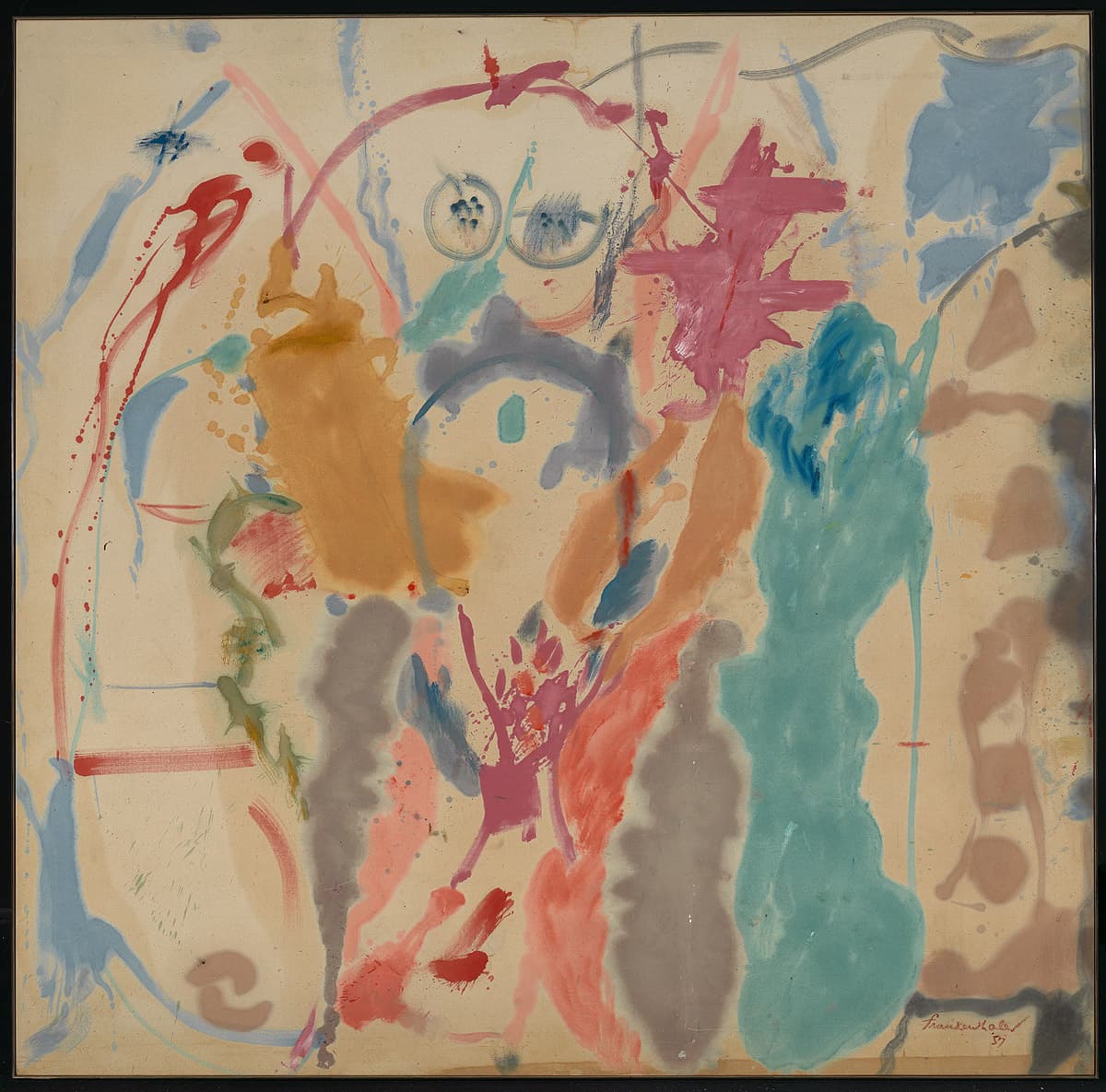

Helen Frankenthaler
Learn moreOther generations 1957
© Helen Frankenthaler Purchased 1973
More detail | PermalinkBorn in New York City, Helen Frankenthaler studied briefly with Mexican muralist Rufino Tamayo before enrolling at Bennington College, Vermont, in 1946. In 1950 she met critic Clement Greenberg who introduced her to many artists of the New York School, including Jackson Pollock and Willem de Kooning. Following a trip to Nova Scotia in Canada in 1952, during which she made many watercolour sketches, Frankenthaler began to apply diluted oil paint directly onto unprimed canvas, exploiting colour in open, lyrical compositions. This ‘staining’ technique is seen in Other generations, painted in 1957. In a statement the same year, Frankenthaler described her approach:
I often start a canvas on the floor (stretched or unstretched) then work on it on the wall ... I use sized and primed canvas or unsized cotton duck. My medium is a combination of turpentine, tube paint and enamel. I use brushes or a palette knife but I often shake or toss the paint off the brush—rather than apply it—or use my shoe or hand, controlling and changing the accidental with specific ideas.[1]
Other generations is one of a series of paintings from the autumn of 1957 that can be distinguished from Frankenthaler’s dense expressionist landscapes of 1955 and 1956 by their larger scale, open composition and gestural freedom. Vestigial images seem to surface in a number of these later paintings, for example, Jacob’s ladder 1957 and Nude 1958.[2] In this work a female torso appears to materialise in the upper centre of the painting. To a suggestion that this image may have prompted the title Other generations, the artist replied:
Titles are a problem! I often fear that they are used too easily as a ‘handle’; leading to an emphasis on the literary and/or subjective interpretation in lieu of an aesthetic one … in the case of Other Generations I myself would tend to minimise yet recognise your ‘association with a full female torso’. One might project or decipher some kind of figure‑shape(s). More important, different carefully‑placed, various‑sized color shapes seem to ‘spawn’ or regenerate each other on the canvas surface; colored lines and forms, working in a negative/positive relationship, that create space.[3]
The usual assumption that male artists pioneer techniques and ideas, to be followed by female artists later, is tested by Frankenthaler’s pouring of paint onto unprimed canvas. This was a breakthrough for the second generation of Abstract Expressionists and served to reinforce the importance of the almost blank or white support, which now seemed almost equally privileged alongside the painted mark. Another gender issue arises in the title of the work, raising the issue of ‘female’ subject matter. But here the references to a female figure, and the artist’s commentary on it, are undercut by the understanding that Frankenthaler is generating images, which may multiply themselves like other life forms.
Michael Lloyd and Michael Desmond[4]
[1] Helen Frankenthaler, ‘New talent in the US: Helen Frankenthaler’, Art in America, vol 45, no 1, March 1957, p 29.
[2] Respectively, collection of the artist; The Museum of Modern Art, New York, gift of Hyam N Glickstein.
[3] Helen Frankenthaler, correspondence with the National Gallery of Australia, 29 November 1988, NGA file 72/2699.
[4] Adapted and updated from European and American paintings and sculptures 1870–1970 in the Australian National Gallery, Australian National Gallery, Canberra, 1992, pp 290–1, by Christine Dixon.

